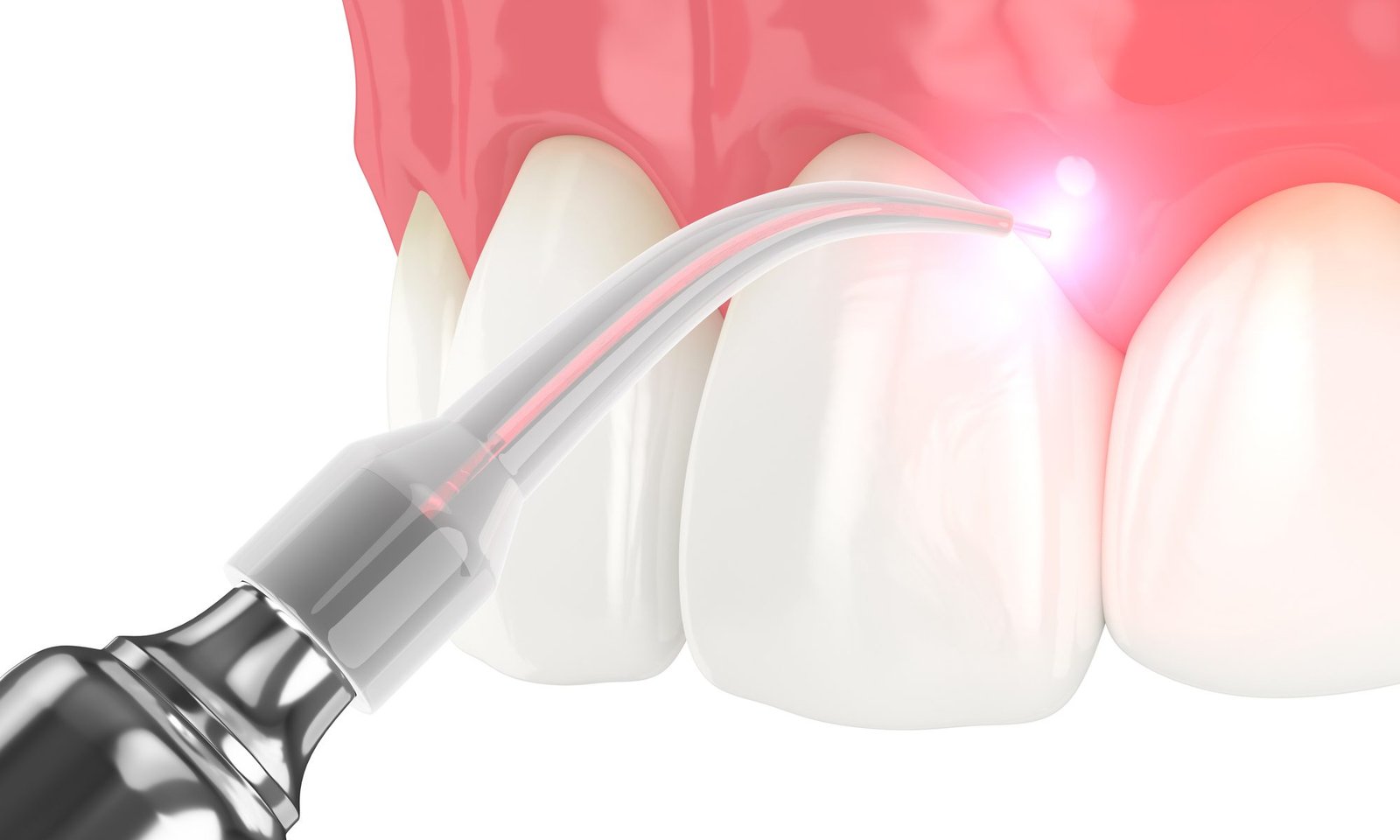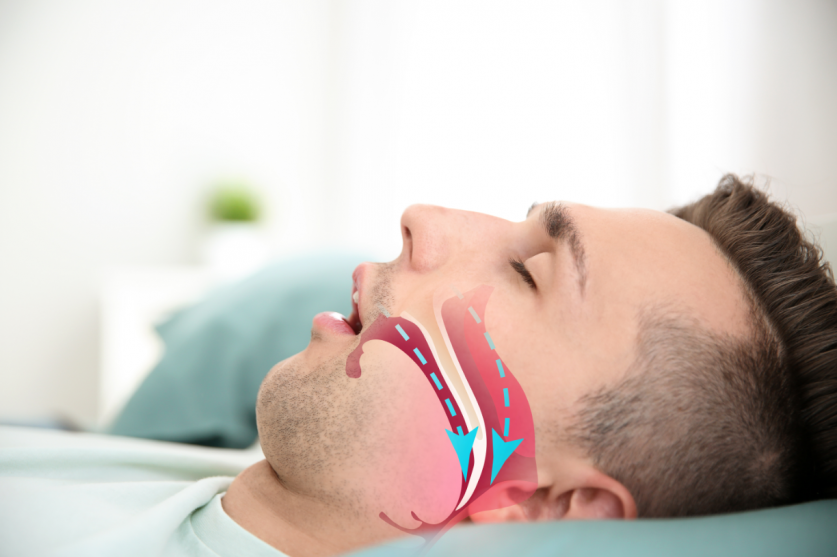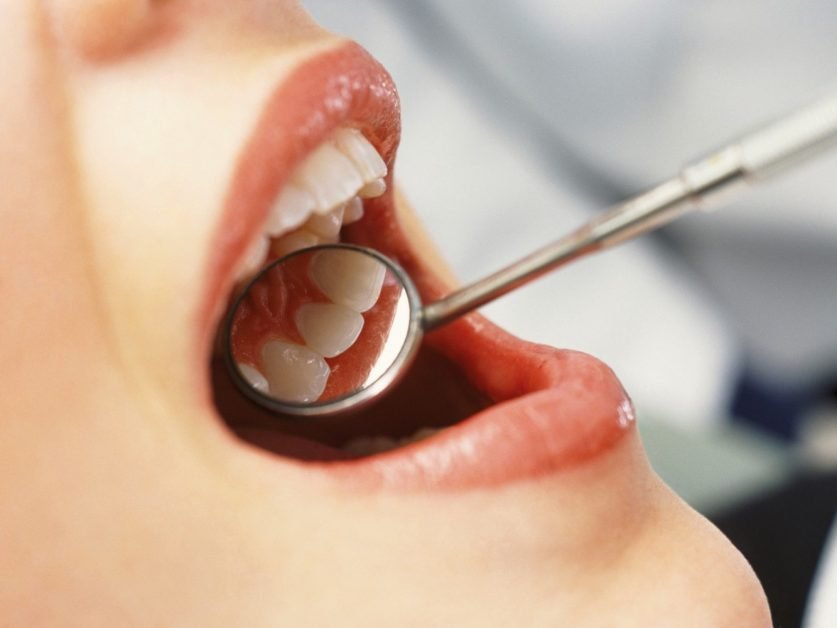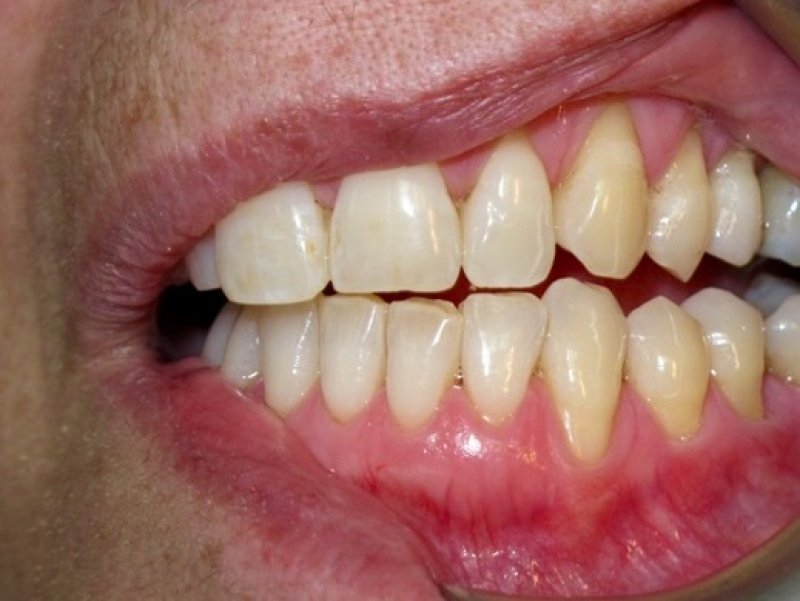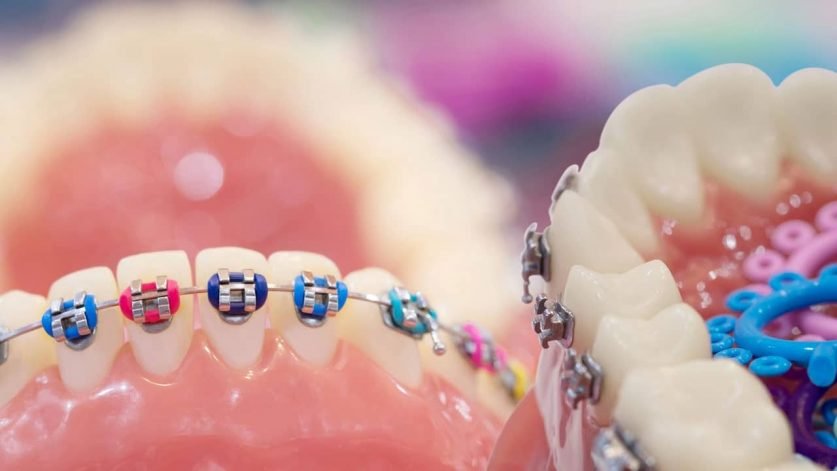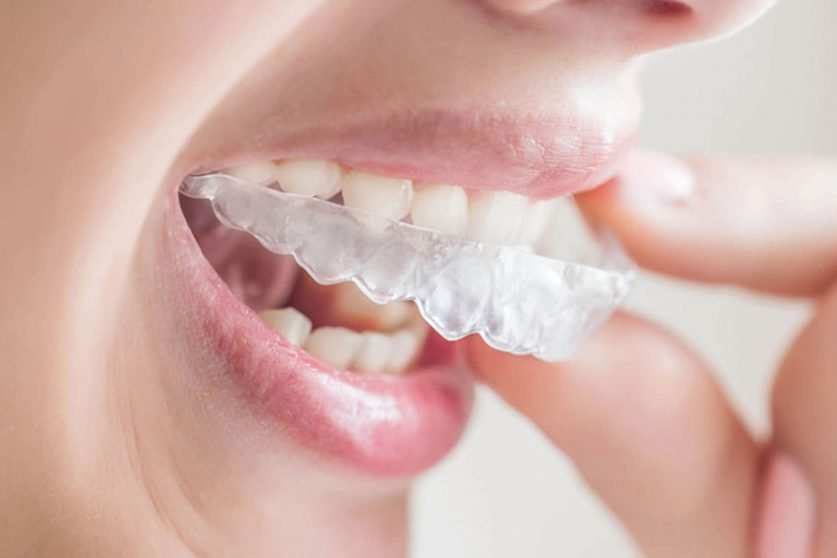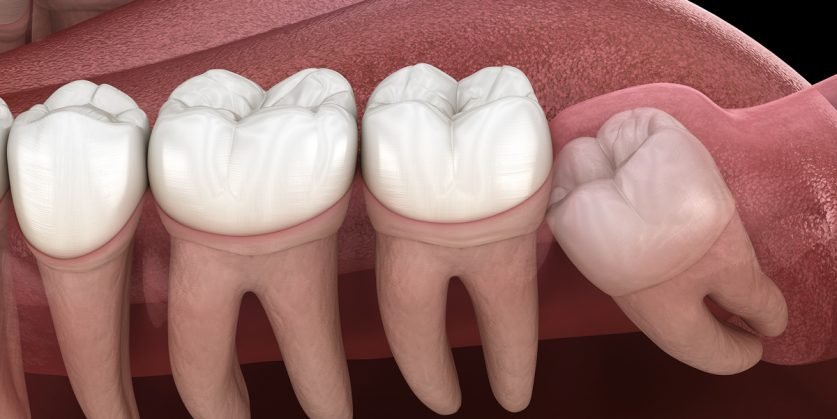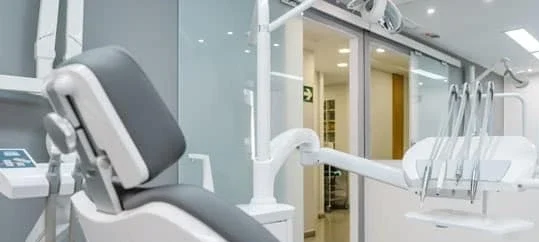Category: Dental
What is Laser Dentistry?
So what do you mean by Laser Dentistry For Cavities? This term refers to when a dentist uses a laser to treat your dental issue. It’s a non-invasive procedure because a thin layer of a beam of light addresses your dental problems. Furthermore, the laser eliminates any heat, pressure, or vibration; the dental patient doesn’t experience any amount of lesser pain or no pain. When your dentist uses Dental Laser Treatments, they are advanced and use the latest dental technology. Dental laser technology is safe, effective, and highly versatile because your dentist can use it for various dental issues. Treatment of gum disease with the help of laser dental cleaning Laser dental cleaning dentists use for periodontal diseases has become a very popular method for treating gum infectious diseases. The Dentist That Open On Saturday use laser technology to remove the infected tissue along the gumline. This also surfaces the way for your deep cleaning process. Here is the following thing patient should know before a laser dental cleaning. Laser dental cleaning vs. traditional cleaning Both laser dental cleaning and traditional cleaning have the same objective, which is healthy and hygienic gums that promote good dental health. However, there are some critical differences between the two. A Traditional cleaning usually requires more prodding and scraping between the gum line and the tooth because of the buildup of tartar and plaque under the gumline. On the other hand, laser dental cleanings work by evaporating all the harmful tissues causing gum disease. While scaling and root planing is an invasive procedure. How does traditional cleaning work? With traditional cleaning methods, Dentist With Saturday Hours physically removes the tartar and plaque buildup beneath your gumline. This may cause pain and discomfort for the patients. However, with laser dental cleaning, your dentist removes infected tissue and prepares the without causing any actual discomfort or any pain to the patient. What are the Benefits of laser dental cleaning Laser dental cleaning is slightly costlier than traditional periodontal cleanings. However, the additional cost is worth it when you have too many advantages over conventional cleaning therapy. Here are a few benefits of laser dental cleaning. It provides a more comfortable experience for the patient. You hardly see or Less swelling after the procedure completes Patients feel less dental anxiety before the cleaning. It involves minimal bleeding during gum treatment. It is very effective at removing infected tissue. Laser dental cleaning allows faster recovery time in individuals with gum disease as this procedure involves less swelling and discomfort caused during the procedure. Moreover, The most significant advantage of laser dental cleaning treatment is that it leads to minimal anxiety among the patients compared to the traditional cleaning methods. If you are still confused about both the dental method, you should contact Dentist Open On Saturday In Houston to know what is best for you.
What is Sleep Apnea?
Sleep apnea disorder happens when a person’s breathing interrupts during sleep. If untreated, sleep apnea stops repeatedly breathing during sleep, sometimes hundreds of times during the night. Moreover, hypertension, strokes, cardiomyopathy, diabetes and heart failure can increase the chances of hypertension. Untreated sleep apnea will be responsible for job impairment, work-related accidents, motor vehicle crashes, and underachievement in school in children and adolescents. What Are the Symptoms of Sleep Apnea? People usually don’t notice the first symptoms of obstructive sleep apnea. However, your bed partner might make you aware of them. Here are the most common signs and symptoms of Houston sleep apnea: Snoring and Headaches Fatigue or sleepiness during for whole day Restlessness nights or regular nighttime awakenings If you found dry mouth or sore throat when you got to wake up Sudden gasping or choking Trouble while concentrating, forgetfulness, or crankiness Depression or anxiety feeling A constant need to go pee when you are sleeping Night sweats and Sexual dysfunction Who gets sleep apnea? According to reliable studies, about 25% of men and nearly 10% of women suffer from Sleep apnea. This sleeping disorder can affect all ages, including children, particularly people over the age of 60 and those who are overweight. Or this may happen due to certain physical traits and clinical features. People with obstructive sleep apnea have excessive weight, large neck muscles and structural abnormalities that decrease the upper airways, such as nasal obstruction. For such types of symptoms, you should visit a sleep apnea clinic midtown TX. What Are the Benefits of Sleep Apnea Treatment? Better Sleep Refreshment People who are suffering from sleep apnea stop breathing 100 times an hour. With such pause, your body wakes before resuming breathing, and the midtown sleep apnea clinic helps you to feel better and more energetic with proper treatment. Lower Risk of Heart Problems & Stroke According to a reliable study, scientists found people with sleep apnea are more susceptible to hypertension and severe disease. The incidence of stroke was higher with sleep disturbances compared to those with proper sleep. Reduced Risk of Depression As the severity of sleeping disturbance increases, a reliable study found that chance of depression may also increase. Any amount of sleep disturbances is associated with an increased risk of frustration and mental diseases compared to people with proper sleep or no disruption. Lower Risk of Mortality People with sleep disorders or sleep apnea are more likely to have less average age than those with severe sleep disturbances. Better Management of Diabetes Sleep apnea makes you more susceptible to a higher risk of developing diabetes. Because treating sleep apnea led to better insulin elimination without diabetes. Several authentic studies have found that those with diabetes and untreated sleep apnea have worse blood sugar control. Lower Risk of Cancer Results from reliable studies are disturbing because people with sleep apnea have a higher cancer rate. And the most common cancer in people was colorectal, prostate, lungs and breast. Get help from your sleep apnea clinic in midtown TX to improve your health.
How To Know If You’re Seeing The Right Pediatric Dentist?
While the final decision is up to the parents to make, there are some things to concider when searching for a pediatric dentist in Miami. Choosing the right medical professional for your child is essential, and here are some factors to concider when choosing the right pediatric dentist. Clinic environment A good children's pediatric clinic near me will have a children-friendly environment. It should be lighthearted and enjoyable, and the waiting area should offer kid-friendly resources like toys, books for kids and teens, magazines, et. These thoughtful design choices show that the dentist's office cares about the children and their unique requirements. Additionally, a lively environment makes your child's dentist appointments more pleasurable. Medical tool size Smaller medical equipment used by pediatric dentists is made to fit and function better in smaller mouths. Consider whether the tools used at the pediatric dentist's office are smaller than those at a typical dentist's office when you go there for the first time. The best pediatric dentist near me should always have the appropriate equipment for the task; if they don't, this should raise a warning sign for parents. Maintaining good dental health is one of the most crucial steps toward overall physical health. Another is encouraging young children to practice good dental hygiene will benefit them for the rest of their lives. Tactics for dealing with misbehaving children It's common to run into kids who act up in some fashion in any pediatric practice. As a parent, it's crucial to watch how your potential dentist handles misbehavior. Be mindful of how the pediatric dentist responds to your child misbehaving during your initial appointment with your child at the new office. The objective is to find a dentist who deals with disobedient kids as calmly and tenderly as possible. Why is pediatric dental care essential for kids? There could be several reasons pediatric dentistry Miami and pediatric dental care are vital for children. Developing good oral health habits Of course, your two-year-old won't require a comprehensive tooth cleaning. But you must instruct them in good dental hygiene. Your child will learn the correct way to use a toothbrush and floss correctly, what a dental cavity is, and other things by seeing a children's dentist. As a result, instilling these habits in children at a young age will help them throughout their life. Maintaining a healthy mouth. One of the most significant and beneficial advantages of selecting pediatric dental services is that it keeps your child's mouth healthy. Regularly visiting a pediatric dentist helps maintain your kid's dental health. In case of any abnormalities in gums or teeth, The pediatric dentist will thoroughly clean your child's mouth and guide them against potential dental infections and diseases. They also suggest ways to prevent further damage. Preventing tooth decay If you take your children to the dentist for regular checks, you can avoid dental cavities and tooth decay. When children don't receive the proper dental care, they develop dental cavities, which, if left untreated, can cause significant oral or dental health problems in the future. In addition to preventing dental cavities, a pediatric dentist can provide helpful advice for maintaining good oral hygiene. Conclusion We hope the above-provided information will give you valuable insight into pediatric dentists and dentistry. For further informative details regarding pediatric dentists, please visit vippediatricdentist.com.
Why is Cosmetic Dentistry So Important?
Restore Confidence and Appearance Cosmetic dentistry is instant and effective in improving the appearance of your teeth and smile. If you are concerned about stained, chipped, gapped, knocked, or crocked teeth. Cosmetic treatment will help correct imperfections, unproportionate teeth, and alignment of your teeths. These cosmetic procedures not only improve the appearance of your teeth but also help you to laugh openly, without any insecurity. With more innovation and modification in technology, cosmetic dentistry can give you natural looks and functioning. You should visit your dentist office near me for a healthy and hygienic smile. With the help of cosmetic dentistry, you start looking Younger As you get older, your teeth can become stained and darker. The natural aging process and tooth stains from food or drinks, tobacco, and red wine can look you older than you are. But with the help of a dentist open Saturday Houston, you can combat these problems and have a beautiful and healthy smile. Improve Your Overall Health Cosmetic dentistry can help you eliminate periodontal diseases and other health issues such as heart disease, cardiovascular disease, and diabetes. Houston dentist open Saturday will strengthen your teeth bites and correct your jaw alignment. Improve Your Diet Many minor dental problems can negatively impact your daily diet. For example, if you have knocked or chipped a tooth, you must limit your eating habits to eliminate the pain. An uneven or bad bite can prevent you from chewing properly, leading to digestion problems. In such a condition, your dental office in Houston recommends onlays or inlays treatment to strengthen your bite chewing ability properly. Improve Dental Health Cosmetic dentistry has gone beyond the improvement of appearance. Some treatments can help to protect you from future teeth and dental issues. For example, a dental crown can prevent re-infection of your treated teeth. In contrast, a dental implant will help to keep your gums and jawbone tissue intact. If you do dental practice, such as brushing and flossing twice a day, you should also visit a dentist open Saturday near me for a routine check-up at least twice a year. Prevent Further Damage Cosmetic dentistry will help to strengthen your teeth and gums by preventing them from future damage. Procedures such as dental bonding, lumineers, and veneers can help to fix chipped or cracked teeth. Improve Financial Outlook Cosmetic dentistry will also prevent dental care and avoid future dental issues, which results in avoiding expensive dental treatment. For example, installing dental implants on time protects your jaw structure from misalignment, shifting, or overcrowding. Simple & Long Lasting Results One of the significant advantages of cosmetic dentistry is that most treatments are quick and straight. In most cases, cosmetic dentists take an hour or a little more but less than general dentistry courses. In addition, you can expect no pain or side effects. Shorter Recovery Time Cosmetic dentistry treatment generally requires less healing time as compared to general dentistry. This means you need to compromise on your food or drink; you can eat anything within a couple of days or sometimes even after hours.
How Can A Gum Recession Diagnose?
Talking about oral hygiene, it is vital to take good oral care through rational checkups. A regular checkup avoids infections and informs about the upcoming disease. The surgeon diagnoses Gum recession during your routine checkup. Your doctor measures the amount of gum recession in your every tooth with a unique tool named the periodontal probe. You might experience bone loss in the gum recession area because of this. Your surgeon will also measure the periodontal pockets near your teeth. A healthy pockets measure between 1 and 3 mm, therefore, with gingivitis, pockets measure 4 mm, and if you have periodontal gum disease, your pockets will measure up to 5mm or maybe higher. How are receding gums fixed? Usually, gum recession treatment depends on the cause of the gum condition. In some situations, the gums are less infected and can be treated non-surgically, such as topical antibiotics, dental bonding, or orthodontics. In some cases, surgery is needed to recover the problem fully. Non-surgical treatments: Includes Topical antibiotics- If your gum recession is affected by periodontal disease and can be treated without surgery at Houston Dental Clinic, your dentist will work more efficiently in cleaning your teeth and making your gums disease free by scaling and root planning, which is a deep cleaning method that is done under the control of local anesthesia to destroy the gum bacterias and infections that are deep under the gum line. Your dentist may urge you to inject an antibiotic straight into your gums to treat the gum disease. Dental Bonding - Sometimes, to make the tooth less noticeable, your dentist can camouflage the gum recession area with the tooth color compound resin. However, this covers your tooth exposure and is less noticeable. Orthodontics - Your surgeon will help you heal your Gum with braces. If you have crooked teeth, a little tilted or rotated teeth, it can cause gum recession too. So, in this case, braces will be a good option to align the teeth properly, and this will help the gum to fill the space and correct itself with time. Gum recession surgery- If you have a severe gum issue, then gum grafting surgery is the best and long-lasting treatment for gum recession. This surgery typically performs a gum specialist. During the surgery, your doctor replaces a gum graft with the missing gum tissue. Basically, the doctor takes a graft from the upper part of the mouth. When the surgeon places the gum graft in the right place, then the surgeon will stitch it into the place. Gum grafting can be of several types, but your surgeon at Dental Clinic Near Me will suggest you the best, depending on your condition. Mainly, Today’s gum grafting methods are convenient and are less invasive. Conclusion: Consider a Texas Dental Clinic to fix your gum recede. If you have a gum recede, visit a consultant and talk about your gum disease or problems you are facing. Gum recession can cause loss of the tooth if not treated on time. You can graft your tooth to avoid further infection and have a beautiful smile.
What Are the Most Common Dental Procedures?
Memorial Dental performs the five most common dental procedures all the time. It may turn out that if a person has a dental performance, your dentist can fix your problems with these five treatments. Common dental procedures Here is a list of five dental treatments that Memorial Emergency Dental has to perform all the time: Fillings Memorial Dentists use dental fillings to treat teeth cavities or decay. They are also used to help you’re injured, knocked, fractured, or chipped. When you find any dental ache, you should visit your dentist for a check-up for cavities and crack, if any. They do this by scan and examining the tooth with the help of X-rays. If the dentist finds any hole, they use a dental filling to fix the issue. Your dentist will use local anesthesia to numb your infected tooth and surrounding gums. Then they will clean the tooth with a water splash before sealing it with a dental filling. Then you need to choose the dental filling based on cost, comfort, and time taken by the dentist. You can choose from gold, porcelain, silver, and dental resin. Then they will fill your tooth with the preferred filling and ask you for a dental crown. Because with the help of a dental crown, your filling durability and longevity may increase. Dental crowns Memorial Emergency Dentist use a dental crown to repair badly damaged or knocked tooth decay from extraction. They are also used as cosmetic appliances. Generally, it takes a dentist two visits to complete the procedure because crowns are made in the laboratory. Sometimes dental can form dental crowns themselves; however, it makes patients get crowns in a single day. Crown restores the teeth by covering them completely, which protects them from further infections or damage. Tooth extractions If your dentist finds your tooth condition is not well for surrounding oral health, the dentist will pull it out. When an impacted or knocked tooth tries to push the gums and fails, your dentist will remove it. If you feel swollen and intense pain around the wisdom tooth while growing and erupting at some angle, your dentist will pull out that molar tooth. If the problem is above the gum line, your dentist will remove it by loosening it from its jaw bone socket and pulling it out. A tooth causing severe trouble under the gum needs to pluck it. Dental implants Dental implants are the best and most permanent option for teeth restoration; placing pseudo teeth or dental implants involves minor surgery. However, if your mouth doesn’t have enough gums and bone, then the dentist may take the help of a bridge and dentures. Braces Braces are one of the most used dental appliances to position your tooth aesthetically and please straight or clean teeth. Dentists use braces for dental issues such as correcting a bad bite, jaw alignment, teeth straightening, and many more. If you find any such dental problem, you should visit Walk-In Emergency Dentist Near Me Open Now.
How Colored Bands Help Braces?
Although this style of brace is frequently referred to as "colored braces," it actually consists of metal. You can add color using the tiny elastic bands attached to the brackets. Each tooth has a metal bracket attached to it by your pediatric dentist Miami beach using a strong dental cement. They then use an archwire to join the brackets together, and the wire is held in place by tiny bands. The kids orthodontist near me gradually pulls your teeth into alignment by tightening the wire progressively in various locations. Dentists fit your braces in one or two hours, but each checkup will only take a few hours. Your teeth may feel painful for a few days following the fitting and after each subsequent adjustment. However, the actual fitting itself shouldn't hurt. Why do we use colored braces bands? The two major orthodontic elastics used in braces each serve a distinct function. Small elastic bands are applied to each metal brace bracket to keep the archwire in place. The elastics have a crucial role in performing since the wire significantly impacts how your teeth move. There are different color braces available for you. Dentists remove or fix these little colored bands using special equipment. They also position larger elastic bands between the upper and lower jaws to help with alignment. This case happens more with children's braces, which are attached to unique hooks. These are "inter-arch elastics" and resemble elastic rubber bands you may use at home. Although they are seldom available in various colors, they are typically put on the sides of the mouth and are therefore less noticeable. How can colored bands make your teeth look whiter? While braces colors cant actually make your teeth whiter, they can make them appear whiter and brighter. You have to ask your dentist for darker colors like black or dark blue braces colors. Dark colors like purple or deep blue will contrast against the color of your teeth beside the brackets and make them appear whiter. There are also Black and violet braces colors that make your teeth look whiter. How to choose braces colors? You might want to stay away from white and clear bands on your braces if you enjoy eating colorful meals like tomato sauce and curries. It is because they might get discolored more easily. Tea, wine, coke, or coffee can all cause stains. Try grey or silver to match the metal brackets if you want a color that blends in but won't show stains as quickly. The fact that white braces might make your teeth appear more yellow in comparison is another drawback. Because yellow braces, especially pale yellow ones, can appear stained from a distance, some people choose to avoid wearing them. Similar to that, green braces could be mistaken for some leftover food. Conclusion We hope the above-provided information will help you learn some beneficial aspects of braces colors. The above article highlights the importance of braces colors. For further informative details, please visit ivanovortho.com.
What Are the Common Invisalign Faqs?
What Is Invisalign? Invisalign Treatment is a process of teeth correction. It starts with wearing a clear, removable aligner that may gradually straighten your teeth—no need to wear wire and bracket traditional braces. Patients cannot remove their braces while eating and brushing. Patients have to wear a series of plastic molds that will help to gradually and gently move teeth into optimal positions. Your dentist will regularly change your mold, and this treatment will last up to 12-18 months. Invisalign are invisible braces; people hardly see them. They are suitable for both teens and adults. Who Is Suitable for Invisalign Treatment Dentists recommend Invisalign treatment near me for those with minor straightforward crowding and bite issues. They are excellent for those who feel underconfident in traditional metal braces. Patients must wear Invisalign aligners for at least 20 to 22 hours daily. In addition, aligners need proper care and ensure that they wear will appropriately for the given time. What Is Involved With Wearing Invisalign Braces? When you choose Invisalign treatment, Invisalign dentist Houston will first take digital scans and 3D images of your mouth and jaw. Then dentistry team will create a personalized plan and series of aligners that you will wear throughout their procedure. Each Invisalign is different in series, though patients will generally move to a new set of aligners weekly. The mechanism of Invisalign is straightforward; the aligners apply gentle pressure to the crowded tooth and allow them to shift accordingly. Invisalign Near Me is clear and comfortable to wear; they are made of thermoplastic soft plastic. So it is natural to forget that you are even wearing them. What Are the Benefits of Invisalign Treatment? Practically invisible They are more comfortable to wear as compared to other types of braces You can remove them while eating and brushing Require fewer visits It takes a Shorter treatment time Practical for treatment of spacing, crowding, and bad bite issues They will cost you the same as metal braces They are removable while eating food and brushing your teeth. Metal and other braces are permanent, limiting your favorite food; this is not the case with Invisalign. What Are the Cons of Invisalign Treatment? There are a few cons with the Invisalign treatment; they are not suitable for everyone. The aligners are less effective in severe and complex dental issues, and Invisalign requires compliance because they are removable appliances. How Do I Get Invisalign Braces? If you have crooked, knocked, or chipped teeth, and you need a hygienic and healthy smile then you need to visit Invisalign Dentist in Houston. If you don’t like brackets and traditional wire braces, you have an aesthetic option of getting Invisalign. If your orthodontist says, you are an eligible candidate. This option helps you to correct your teeth even without even getting noticed.
What Is The Recovery Time Of The Wisdom Teeth Removal Procedure?
Although an orthodontist North Miami may view the removal of wisdom teeth as a simple treatment, it might take a patient up to two weeks to recuperate completely. The complexity of the surgery and the wisdom tooth determine how long the procedure takes. People will gradually recover from wisdom teeth surgery, but daily progress should be visible. You may require stitches for certain people to help close the wound. After about a week, the dental surgeon will typically remove the stitches. Consult with your dentist regarding the wisdom teeth removal costs Miami and other treatment plans before the surgery. After wisdom teeth removal Miami surgery, pain, swelling, and bruises will need time to go away. People could also go through: Jaw clenching or a small mouth opening Anesthesia-related vertigo or lightheadedness What are the recovery tips from wisdom teeth removal surgery? The following recovery tips may help a person feel better after surgery for wisdom teeth. A person should eat food as they can tolerate it. A person may feel queasy or vomit if sedated or under general anesthesia. It might be easier if you take your medication with food. Prescribed pain killers may also cause nausea in some cases. Discuss side effects, medications, and changes with the adult orthodontics Miami. Contact your orthodontist Miami beach if the vomiting or nausea persists. Recovery time is different for everyone. If the wound becomes infected or the blood clots become dislodged from the wound, the recovery may take longer. How to reduce swelling? Some edoema could result from the localized damage that wisdom teeth removal causes. Cold compresses, ice chips, or ice packs applied to the removal site or the face can reduce edema. Ibuprofen and naproxen, both of which are anti-inflammatory drugs, can also assist in lessening swelling. Beginning 24 hours after surgery, rinse the mouth with salt water or a dental office-recommended oral rinse if swelling develops from removing the food particles lodged in the area. What can a person do immediately after wisdom tooth removal? People should follow the advice of their dentists or surgeons on how to aid recovery. They should provide clear information on what to do to encourage healing and any medication to take for faster recovery. Recovery advice may include biting on the gauze pad in the extraction area for up to sixty minutes. A dentist may also suggest using an ice pack to reduce swelling and pain for a few hours after the surgery. You should hold an ice pack on the outside of against the cheek for 15 minutes on and 15 minutes off, which will help reduce swelling and discomfort. Suppose someone has had a general anesthetic and been in the hospital for surgery. In that case, they will not be permitted to drive for 48 hours. If possible, take one or two days off from work or school after surgery. Following wisdom tooth removal, patients may use painkillers like ibuprofen to ease pain and discomfort. Conclusion We hope the above-given information will help you know more valuable facts and information regarding wisdom tooth removal recovery. For further informative details regarding wisdom tooth removal, please visit ivanovortho.com.
Why Do Braces Have Various Colored Bands?
There are two main types of orthodontic bands that dentists use in braces. And each serves its purpose. They place tiny elastic bands on each metal brace bracket to hold the archwire in place. These are also known as 'o-rings' or 'ligatures.' Those elastics are crucial in performing since the wire significantly impacts how your teeth move. Ligatures are available in a variety of braces color ideas. As you'll see in the video below, dentists fit and remove these tiny bands using unique equipment. Larger rubber bands may also be positioned between the upper and lower jaws to aid in alignment. With children's braces, this is more frequently the case. They are attached to unique hooks on the brackets for the bracing. These are "inter-arch elastics" and resemble rubber bands you may use at home. Even though they are typically present on the sides of the mouth, they are less frequently available in various colors. What are good color choices for dental braces? Every braces color is good in its own way, and colors become good or bad according to the preferences and choices of the wearer. The most basic and effective way to select a good braces color is to choose your favorite color. You have a lot of different color braces and alternatives, so it's acceptable if you're unsure about the color of your braces. You can always change at your subsequent orthodontic appointment. Navy blue or hunter green is neutral. Cool tones like blue braces colors that enhance your teeth and do not attract too much attention to your braces. These options are suitable for almost everyone, and anyone who wants to avoid having to make numerous selections regarding their braces should go with this option. The orthodontist and their helpers will probably have some excellent suggestions when you visit them for braces. After all, they have a tonne of knowledge and assist many customers in suggesting the best braces colors to get. What do you think are the best braces colors for girls? Girls or anyone interested in a more gentle and feminine look can opt for a brighter, lighter color tone for their braces bands. Violet, light blue, green, or light pink braces colors go well with a softer or more feminine vibe. Pastels can be a lovely and appealing way to enhance your beautiful smile with a feminine look. Try a color like gold or vivid magenta for a stronger feminine appeal. These will catch attention and be an exciting accessory choice for anyone seeking a more feminine appearance. Since you can change the color of your braces every month during your regular dental visit, have fun, and don't be scared to experiment. Anyone wearing braces should avoid extremely dark colors like black and brown since they might cause your teeth to appear stained or discolored. Conclusion We hope the above-provided information will help you know more about braces colors. The above article focuses on how to select suitable braces colors and more. For further informative details, please visit. Ivanovortho.com.
Popular Categories
- Blog (11)
- Dental (135)
- Diet And Nutrition (15)
- Fitness (33)
- Health (169)
- Lifestyle (25)
- Mind & Body (15)
- Weight Loss (16)

